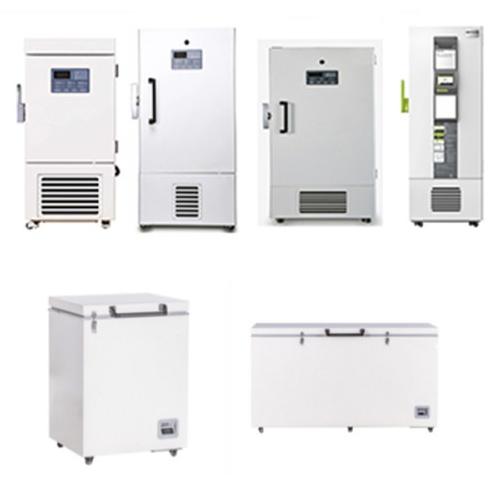Laboratory refrigerators, also known as laboratory freezers, play a crucial role in scientific, medical, and research environments by providing precise temperature control for the safe storage of perishable materials such as sensitive samples, reagents, vaccines, and medications. These lab refrigerators are designed with features like digital temperature display, alarms, energy-efficient technology, and compliance with regulatory standards to ensure optimal storage conditions.

Types of Laboratory Refrigerators:
General-Purpose Laboratory Refrigerators:
Commonly used for general storage of samples, reagents, vaccinations, and perishable products.
Temperature range typically from 2 to 8 degrees Celsius.
Available in various sizes and capacities.
Flammable Material Storage Refrigerators:
Designed with spark-free interiors and specialized ventilation systems.
Mitigates the risk of fire and explosions when storing combustible goods.
Explosion-Proof Refrigerators:
Intended for use in potentially explosive situations.
Features spark-free interiors, explosion-proof components, and safety measures.
Pharmacy/Vaccine Refrigerators:
Specifically built for vaccines, pharmaceuticals, and temperature-sensitive medications.
Accurate temperature control, alarm systems, and backup power supply.
Ultra-Low Temperature (ULT) Freezers:
Capable of reaching extremely low temperatures (-40 °C to -86 °C).
Used for the long-term preservation of temperature-sensitive items.

Blood Bank Refrigerators:
Designed for the safe storage of blood and blood products.
Equipped with precise temperature control and specialized compartments.

Chromatography Refrigerators:
Exclusively built for the storage of chromatography columns used in analytical chemistry.
Features accurate temperature control and specialized storage designs.
Maintenance and Best Practices:
Regular Temperature Monitoring:
Monitor temperature frequently with a calibrated thermometer or a monitoring system.
Proper Cleaning:
Regularly clean the interior and exterior to prevent dirt accumulation.
Proper Storage Organization:
Organize samples for optimal storage, preventing cross-contamination.
Avoiding Overloading:
Do not exceed recommended capacity to maintain optimal performance.
Regular Defrosting:
Defrost regularly to prevent ice buildup and ensure effective cooling.
Door Management:
Avoid frequent and extended door openings to maintain temperature stability.
Regular Maintenance Checks:
Schedule inspections to evaluate and calibrate temperature sensors, test cooling systems, and inspect seals.
Power Outage Preparedness:
Install backup power sources to maintain temperature stability during power outages.
Compliance with Manufacturer’s Recommendations:
Follow manufacturer's guidelines for operation, maintenance, and safety precautions.
In summary, laboratory refrigerators are indispensable tools in maintaining the integrity and viability of stored samples, contributing to accurate experimental results and research outcomes in laboratory settings. Adhering to proper maintenance practices ensures optimal performance and extends the lifespan of these crucial devices.







